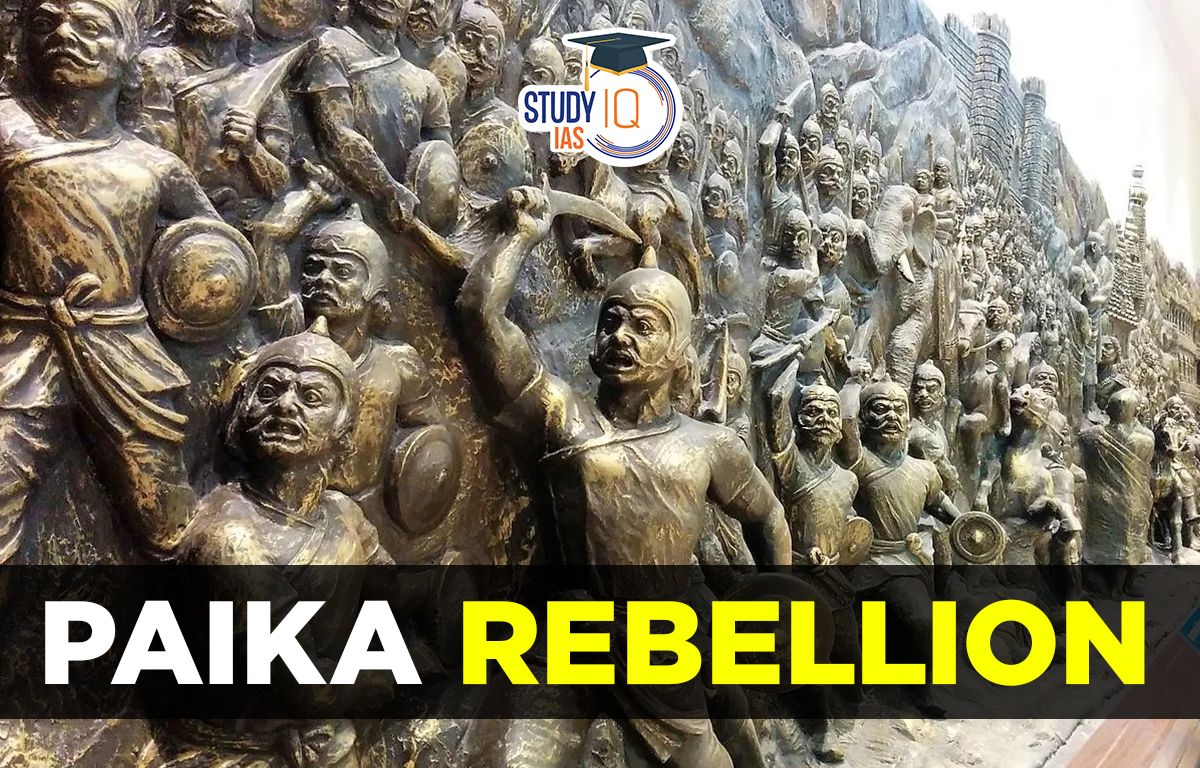Table of Contents
Paika Rebellion
Paika Rebellion is also known as Paika Bidroha. India experienced an armed rebellion against Company rule in 1817. Bakshi Jagabandhu commanded the Paikas when they revolted, using Lord Jagannath as a stand-in for Odia unity. Before being put down by Company soldiers, the uprising quickly spread across much of Odisha. You will learn about the Paika Rebellion (1817) in this article, which will help you prepare for the UPSC Civil Service Exam.
Read about Sanyasi Revolt
Paika Rebellion History
Many social, economic, and political elements led to the Paika Rebellion Revolt. Four commercial ports in Odisha are part of vast regional networks that connect millions of traders. The East India Company alienated large segments of the local population by closing these ports to commerce in order to protect its monopolies. By taking away the ancestral rent-free lands that had been granted to the educated and wealthy natives, the Paikas, after the capture of Khurda, the East India Company administration infuriated them.
The Company’s management and slaves also utilised extortion against the Paikas. Both peasants and zamindars were negatively impacted by the Company’s coercive land revenue tactics. The rise in salt prices brought on by charges imposed by the Company administration greatly alarmed the general populace. Moreover, the East India Company abolished the cowrie money system that had existed in Odisha before to its invasion and mandated the payment of all taxes in silver.
The general populace as a whole experienced considerable misery and discontent as a result. In 1804 the Paikas helped the Raja of Khurda prepare an uprising against the Company, but the conspiracy was discovered and the Raja’s territory was captured.
Read about: Indigo Revolt
Paika Rebellion Reason
The King of Khurda, Mukunda Deva II, was enraged by the British administration’s quick introduction of a new system of governance after seizing control of Odisha from the Marathas in 1803. The British quickly learned of his planned uprising in cooperation with the Paikas and tore him to pieces. Then they seized all of the Paikas’ land under the inheritance of the overthrown King.
In addition, a number of other British actions, such as the implementation of a new monetary system, the abuse of the Paikas by company officials, and the prohibition on the production of salt from saltwater, sowed discontent and animosity against the British. A powerful contingent of 400 Khonds from Ghumusar marched to Khorda in 1817 and announced their intention to liberate both Ghumusar and Khorda from British domination. The Paikas of Khurda also joined the crowd.
Read More: British Administration System
Paika Rebellion Course of Events
While marching towards Khurda, the Paikas killed some East India Company officials and set a police station on fire. The kings of Nayagarh, Kujang, Kanika, village headmen, peasants, and zamindars all provided strong support for the uprising. Rapid expansion of the uprising into Purl, Pipli Cuttack, and other areas of Odisha.
The Paikas first appeared to have the upper hand in the conflict and had some success, but they were put down by the British in just three months. Although though some Paikas engaged in guerilla warfare against the British, the uprising was put down completely by 1819. As a result, it persisted for a year and a half before being brutally put down by the armies of the British East India Company. The Paika leader, Bakshi Jagabandhu, surrendered to the British in 1825 after suffering several defeats, and he remained a prisoner at Cuttack till his death in 1829.
Read More: Socio-Religious Reform Movement
Paika Rebellion Outcome
The outcome of the Pika Rebellion was depressing since the rebels responsible received execution and lengthy prison terms. The British government created a panel to investigate the uprising. Following this Paika insurrection, which was started by residents of the Kandha and Koi regions, there were violent upheavals. The income policy, which remained unchanged after the Paika uprising, was the main problem.
Lord Jagannath was portrayed by the insurgents as the emblem of Odiya unity. This was a brutal uprising that took place before the renowned Rebellion of 1857, which challenged British Sovereignty in India, but it was not very well-liked. The Prime Minister honored and recognized the descendants of families connected to the uprising on the occasion of the 200th anniversary of the rebellion.
Read More: Singh Sabha Movement
Paika Rebellion UPSC
During the uprising, Lord Jagannath was represented as a representation of Odia harmony. It was a terrible uprising that took place before the well-known Rebellion of 1857, which challenged British Sovereignty in India, but it did not have popular support. On the 200th anniversary of the insurrection, the prime minister honoured and praised the offspring of families involved in it.
Read More: Ahmadiyya Movement


 Jallianwala Bagh Massacre, Date, History...
Jallianwala Bagh Massacre, Date, History...
 Important Lakes of India, State wise and...
Important Lakes of India, State wise and...
 Buddhism History, Origin, Sect, Councils...
Buddhism History, Origin, Sect, Councils...





















